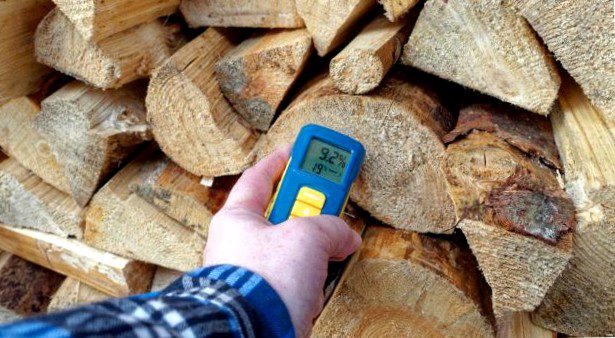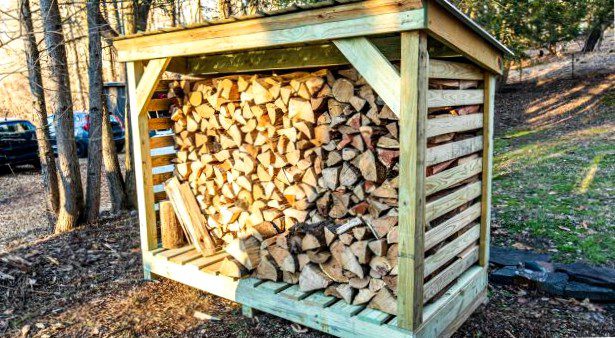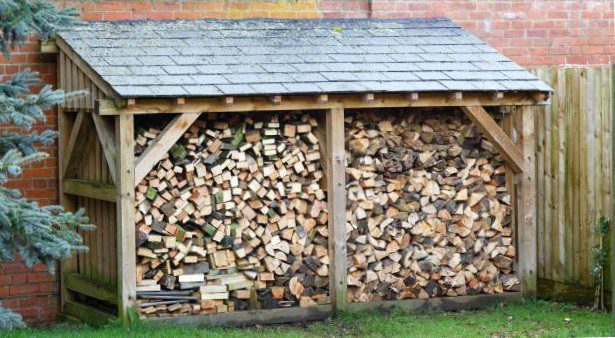Sitting by a crackling fire is still, and despite all the more modern forms of heating, a popular pleasure for very many people. Regardless of all innovations there are since the turn of the millennium permanently between 10 and 12 million so-called single room furnaces in Germany. An abating of the trend is not already in view, because the pallet of the Designs becomes constantly more various and the furnaces play the likewise rising environmental-technical editions fulfill. However, one thing is as true today as it ever was: the fuel must be stored inside and out in such a way that it is ready for use in the best possible way, both technically and in terms of convenience.
The most important requirement: the law

In Germany, no stove may be put into operation unless it has been approved in its entirety (i.e. including chimney and fresh air supply) by the authorized district chimney sweep at the place of installation. Already this is a law – therefore it is absolutely advisable to contact the chimney sweep already, before the choice on a certain model falls. This is also related to the fact that furnaces have different outputs and can therefore be oversized or undersized depending on the volume of space to be heated. Although there are no detailed specifications on how exactly to store firewood, there is an end result dictated by law:
The First Federal Immission Control Act makes precise specifications regarding the exhaust gas composition. This not only determines which fuels may be used at all (namely typically only untreated wood, wood briquettes/pellets as well as brown coal briquettes), but also the residual moisture of the wood.
Only if the moisture content does not exceed 20 percent, the wood may be put into the stove. If it is wetter, it must be stored in an optimized way until it falls below this value. Based on the fact that very freshly cut wood has a moisture content of 60 to 150 percent (depending on the tree species, location and weather conditions), this results in storage for at least several months. Especially since the 20 percent are only the top guideline value. It would be better if the wood had even only 15 percent. The lower, the better the combustion, the higher the calorific value and the less work the chimney sweep has to do.
Sometimes there may be additional municipal requirements. For example, that only a certain volume of wood may be stored and it must be protected from view. This must be inquired however locally specifically in the city hall, blanket answers are impossible.
Moisture protection as a key objective

In plain language this means: Outside, the main attention must be paid to ensuring that the wood achieves a negative moisture balance despite being stored outside. More evaporates from the wood than is absorbed by rain, snow, and humidity.
Regardless of all other measures, this results in some conditions that should basically be adhered to in order to keep additional water away from the wood:
- It is essential to protect the storage place from rain. Here the do-it-yourselfer has numerous options. They range from a roof construction in the style of a small car port or a patio roof down to extremely simple solutions by pieces of corrugated iron or similar soft roofing materials placed on top of the wood pile. It is only important that the wood gets as little water as possible directly from above. For this purpose, the roof should protrude above the wood
- All wood must be stored in such a way that slanting water does not penetrate into the heartwood, if possible. When stacking, therefore, care must be taken to ensure that the bark of each log or meter piece faces upwards and that all logs are stacked carefully. As a result, rainwater simply runs off. This is especially important where a comprehensive roof cannot be erected.
- The wood should always be stored slightly elevated, i.e. not resting directly on the ground. Here, either a gravel bed approximately half a meter deep can be constructed for a final storage location, or pallets can be used for more flexible solutions.
However: At least firewood that still has to dry should never be stored in garages, sheds or similar places. Although this would be optimal from the point of view of weather protection, it would enormously inhibit the necessary drying of the air. Such rooms (if they are approved at all for storing fuel) are only a suitable choice for already dry, airtight materials. So lignite briquettes as well as packaged wood briquettes and pellets.
Through air currents to optimal dryness

Weather protection is only one factor that needs to be fulfilled. The other is, as mentioned, that the wood must dry out and remain at this level. This can only be accomplished by constantly circulating air around and through the wood pile.
The most important basis for this is that wood is never stored as a whole, if possible. That is, even log sections should at least be split to allow air to reach the heartwood. Based on this, the storage conditions should be as follows:
- The front of the wood should face west or southwest. This is the prevailing wind direction in most zones of Germany – however, local deviations should be checked beforehand; for example, due to mountain formations. Such storage at the same time minimizes the area on which slanting rain can hit and, as it were, provides a tunnel effect between the pieces of wood.
- If possible, a stack of wood should not be deeper than ca. Be 1 meter. Otherwise the back rows do not get enough air and dry considerably slower.
- Accordingly, the stack must be open at the front and back. However, a lattice construction in the back is sufficient if this has a positive effect on stability. Under no circumstances, however, should the wood lean against building facades. If it stands close to buildings, air should definitely be able to circulate behind it when the wood is not yet dry.
- The storage time is only a few months under optimal conditions with a lot of sun and wind. That is, wood cut in the winter half-year can possibly(!) can be burned as early as the next winter. Typically, however, stove owners should assume that they will not be able to use it for heating until the following year at the earliest – this is important for the procurement of supplies. Ready-bought firewood can usually be used immediately.
Such a storage place offers wide fields of activity for do-it-yourselfers. In this way, a shelf can be built, which at the same time represents the rain roof and prevents the pile from sliding to the sides. All that is needed are four ground sockets, suitably spaced, into which square beams are inserted vertically. If these are diagonally braced together by roof battens or strong wire, great stability is created, which even safely accommodates larger quantities of wood.
By the way, it is strongly recommended to store the wood as close as possible to one of the entrances to the building. Because regular walks will be necessary. Sometimes it can be therefore meaningful to pave a garden way and to do similar also before the wood shelf, in order to be able to fetch dry foot supplies.
Cut up as quickly as possible
© Ivan / stock.adobe.com | The more quickly and completely private wood supplies are cut to stove size, the better for the..
If you buy firewood ready for the stove, you can skip this chapter. However, if you want to do at least certain steps yourself for cost or fun reasons, you should take a close look.
Especially in the beginning, many stove owners do not know what annual consumption they come to. Accordingly, this should be calculated. But this requires looking at the calorific value of each type of wood, stove performance and typical use. As a very rough(!) As a guideline, for a 5 kW stove you can assume 0.0025 cubic meters of firewood consumption per hour. One cubic meter of firewood is therefore enough for 400 hours.
Regardless of the actual need, however, do-it-yourselfers should keep one thing in mind: meter pieces and similar intermediate forms should be reworked as soon as possible and in their entirety ready for the oven. First, this makes drying easier; second, it ensures that all the reserves are ready for immediate use.
Important: The length of the individual logs depends on the stove and what is written in its operating instructions.
Store firewood in the interior in portions

Hardly anyone wants to go to their lumberyard for every log of wood. Therefore, a storage location closer to the oven is highly recommended. It is quite sufficient to have a daily ration in stock there. Due to the proximity to the facility, however, a stronger focus on an appealing design is necessary here. Typical options here are:
- Shelves integrated directly into the oven. They have the immense advantage that no further land consumption is incurred.
- Minimalist wooden shelves welded from square tubing: Two horizontal tubes, plus two vertical ones at each end, and another horizontal connection at the top if necessary.
- Large wicker baskets. They have a rustic look and the advantage of being a proven transport container at the same time.
- Strips of sheet metal bent to form a large U. They can be combined with a wooden substructure for an industrial look.
This is just to show some examples. Because what is really allowed is what pleases and what one's own DIY skills permit. As long as a layer of logs is kept safe and stable in it, there are no limits to the imagination.
However: You will still not be able to avoid a transport container. Because only a few logs from the firewood store can be brought into the house with your hands.